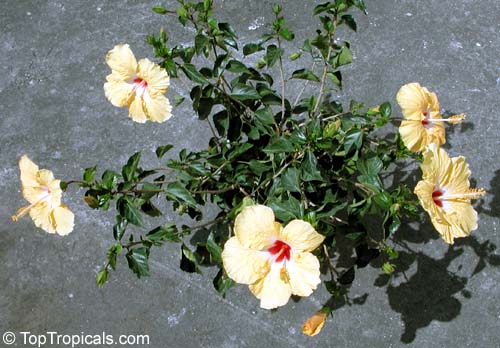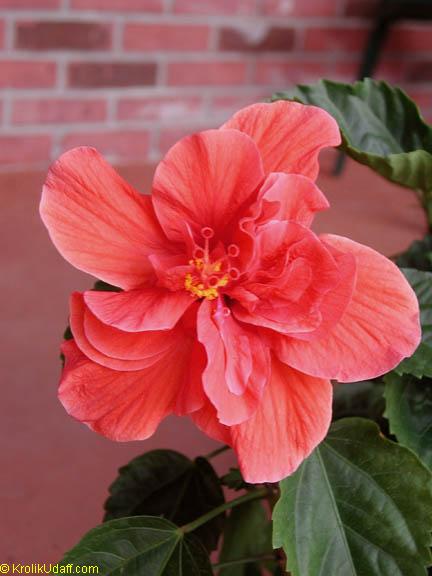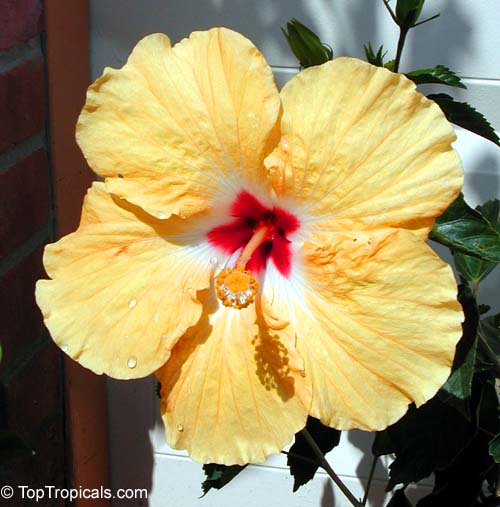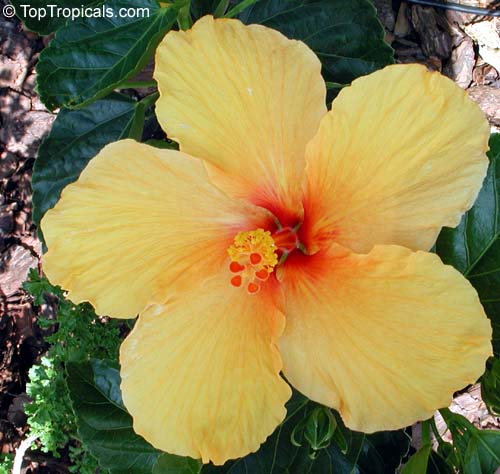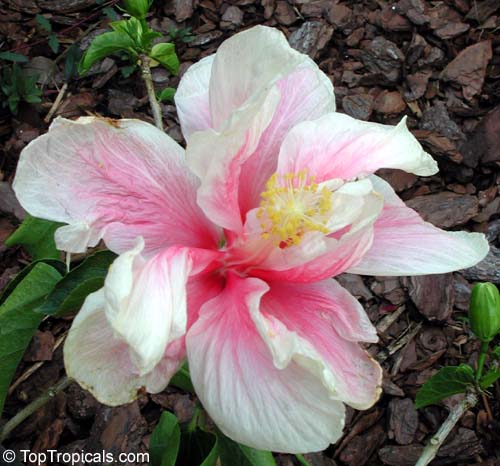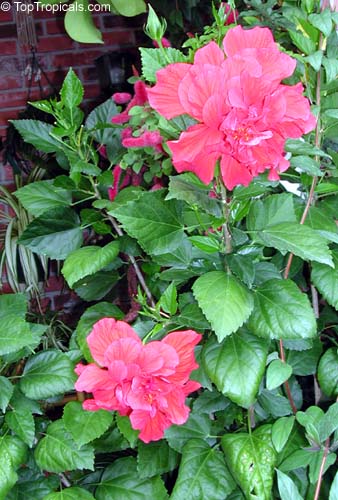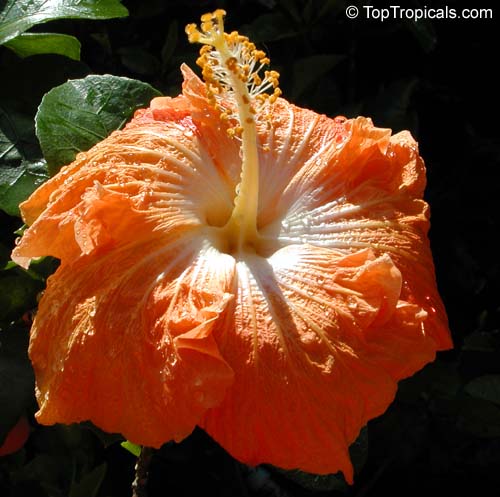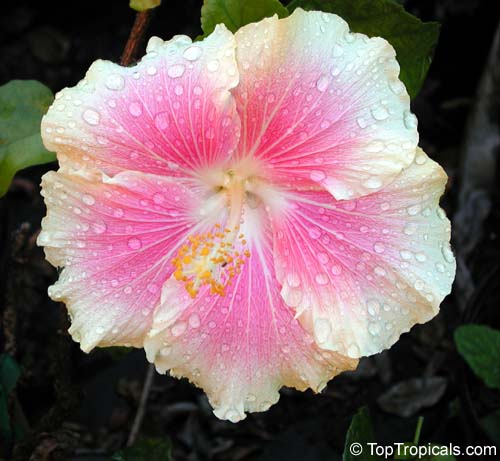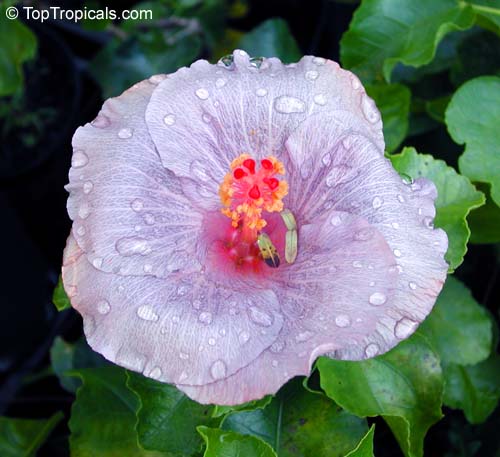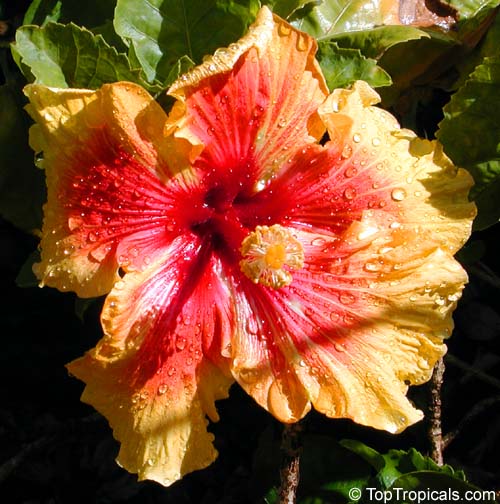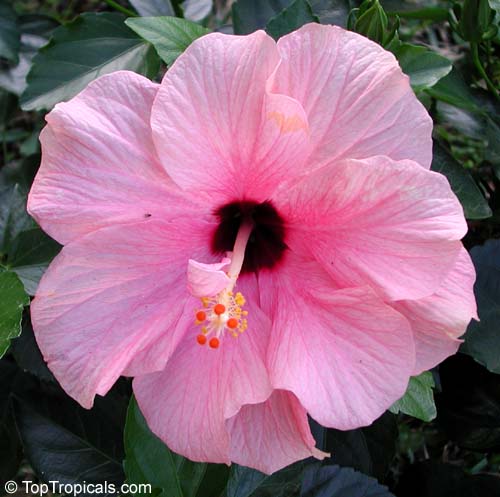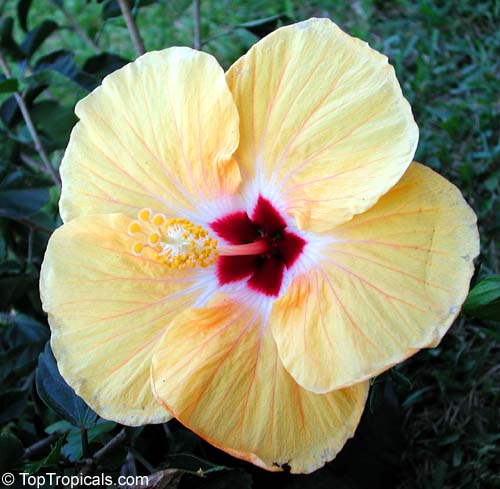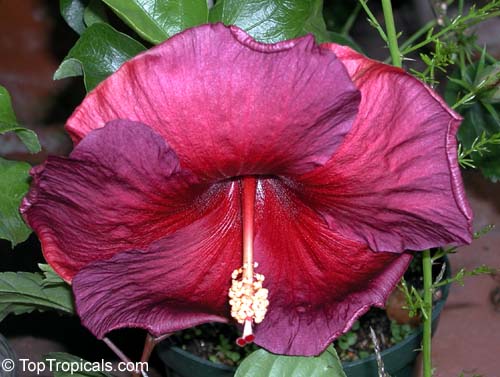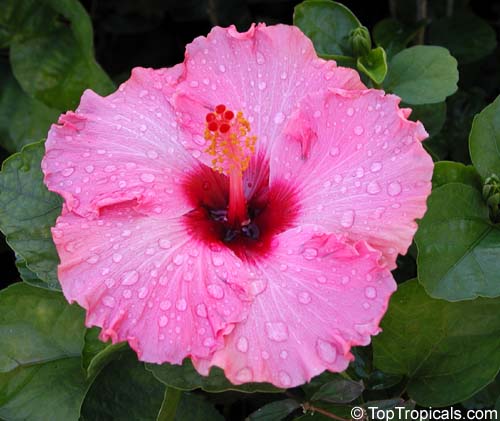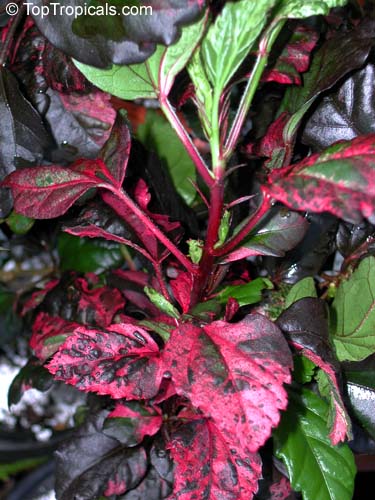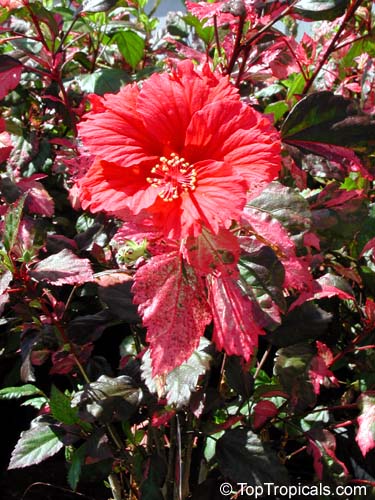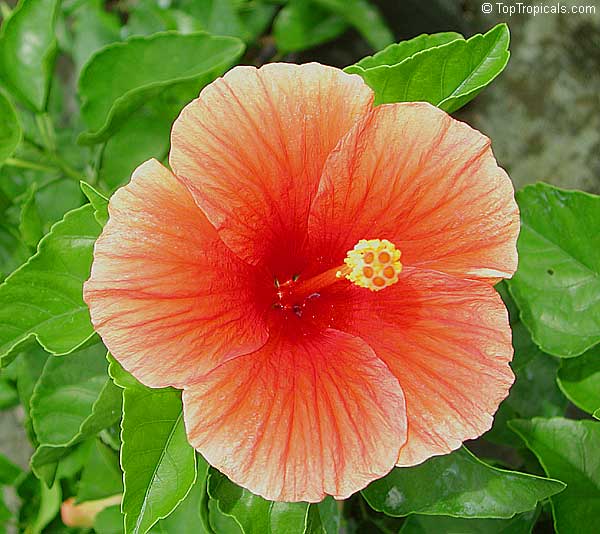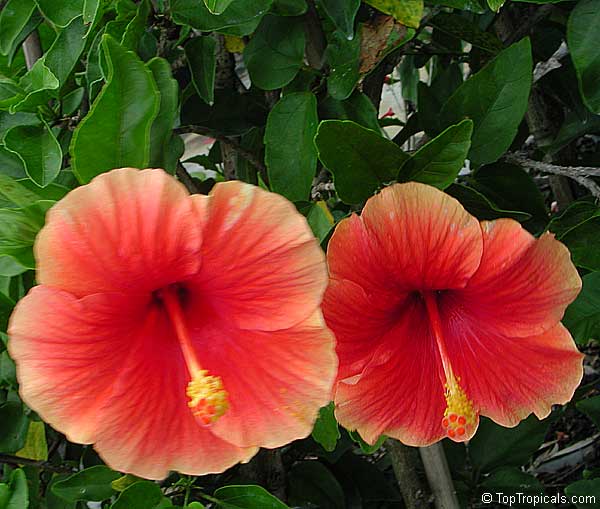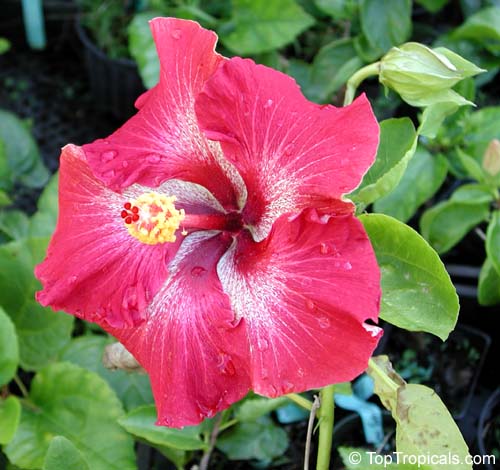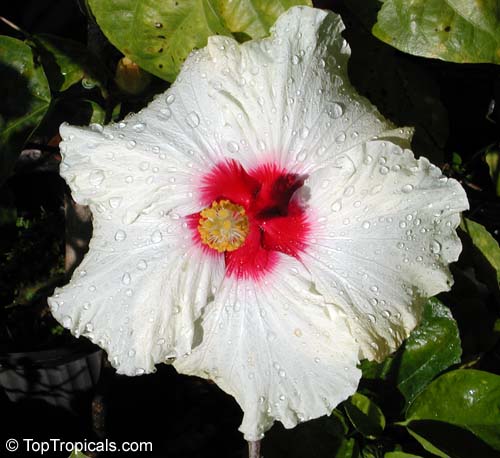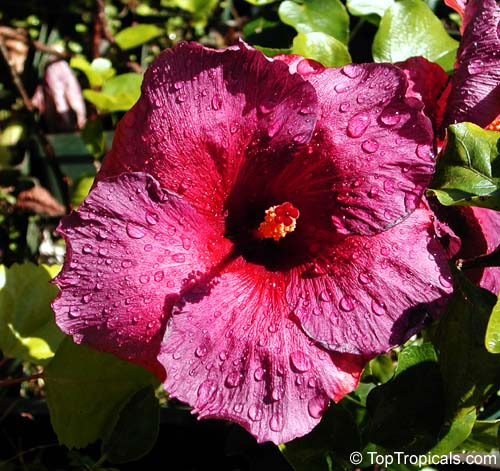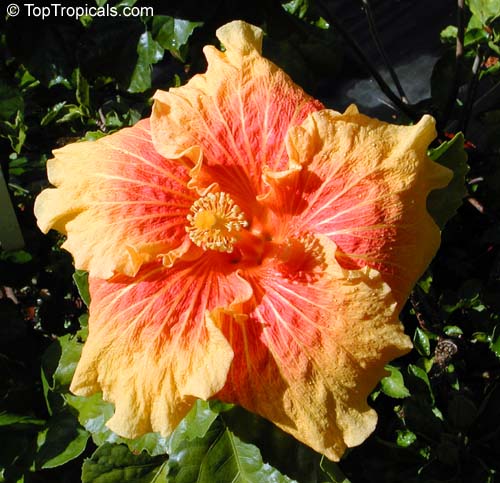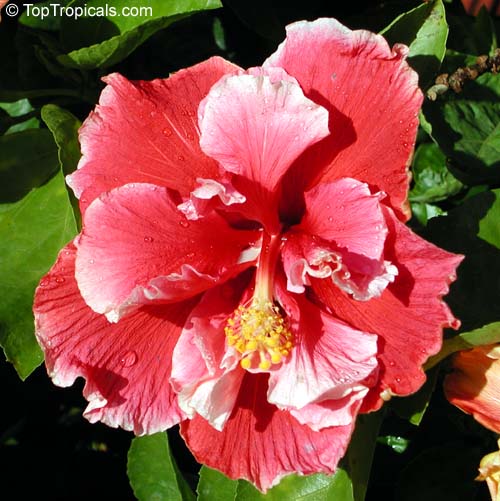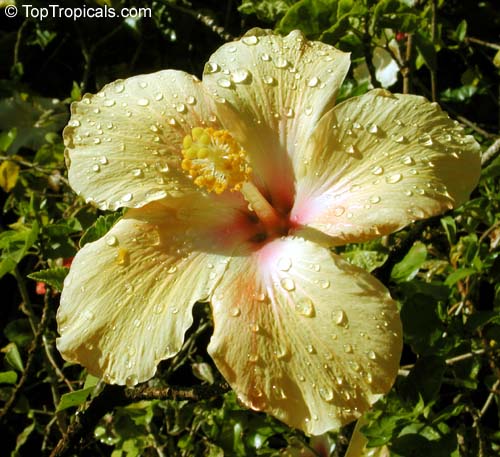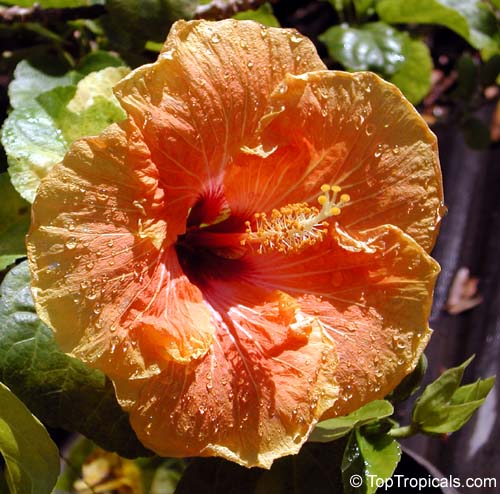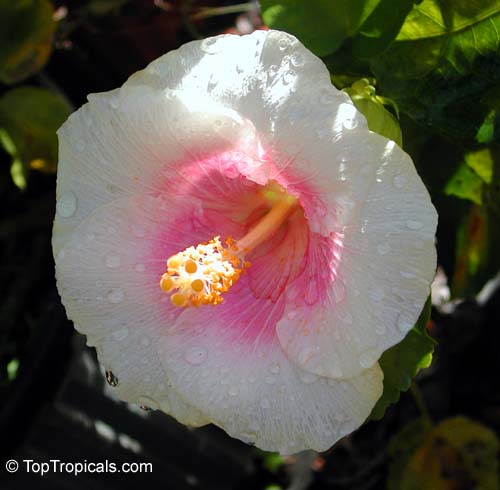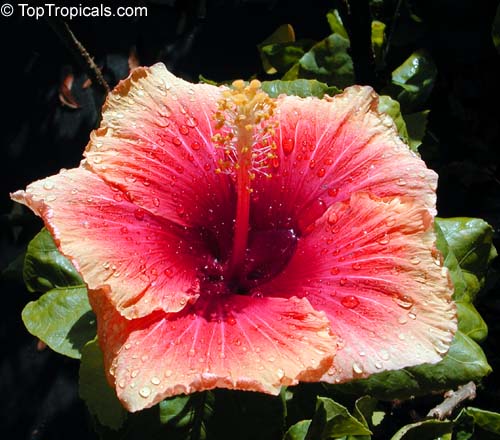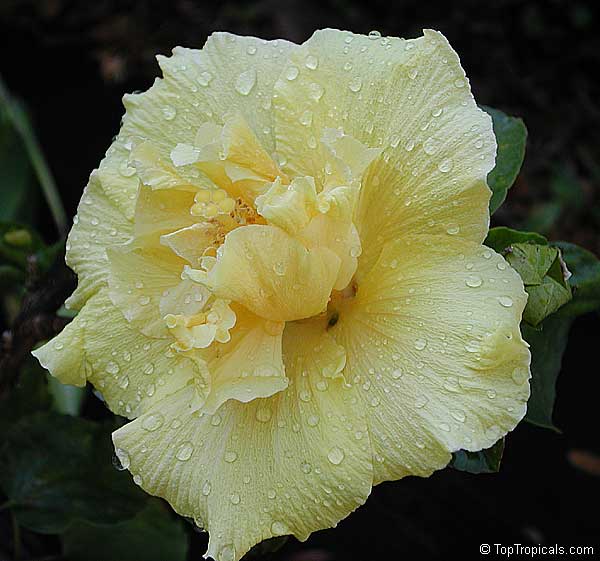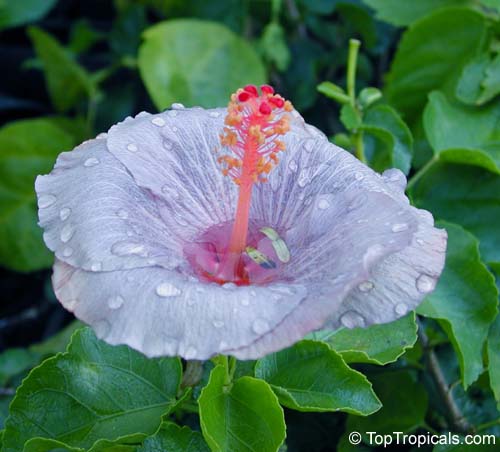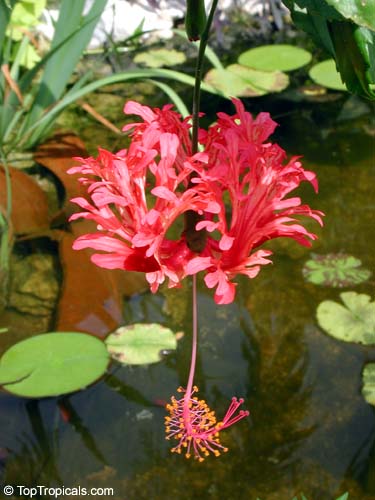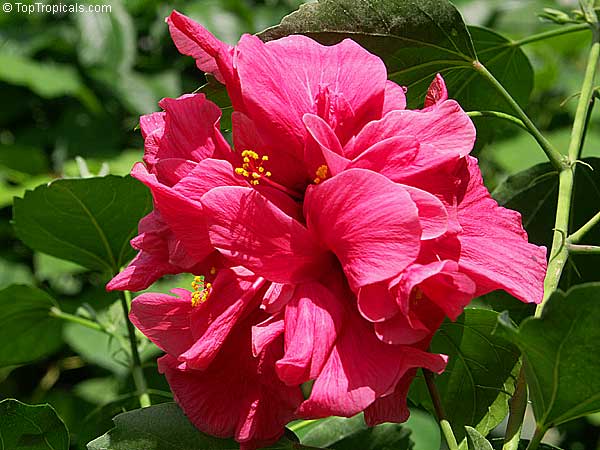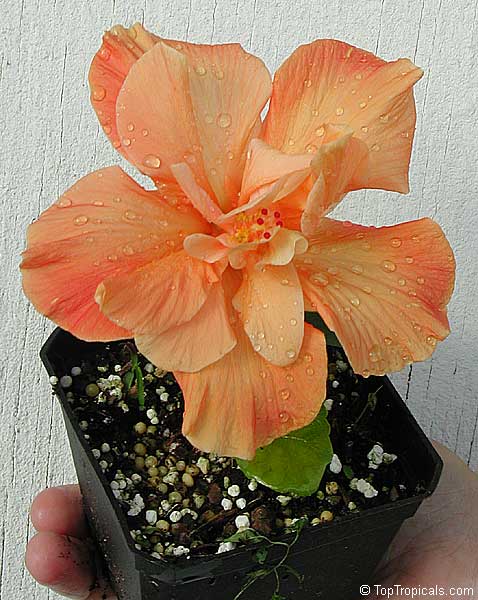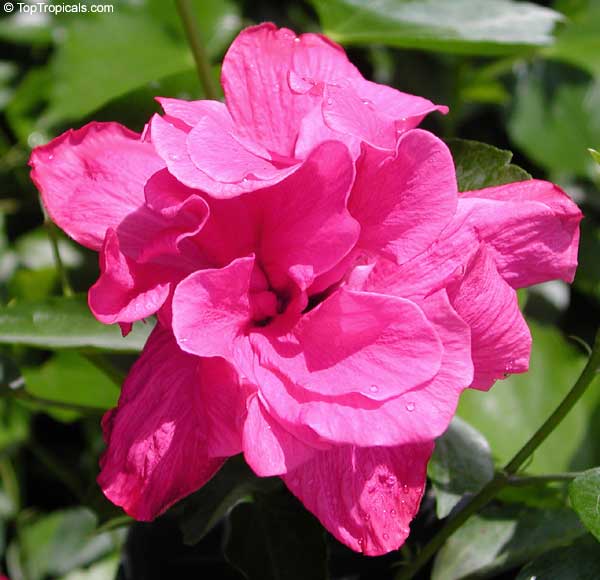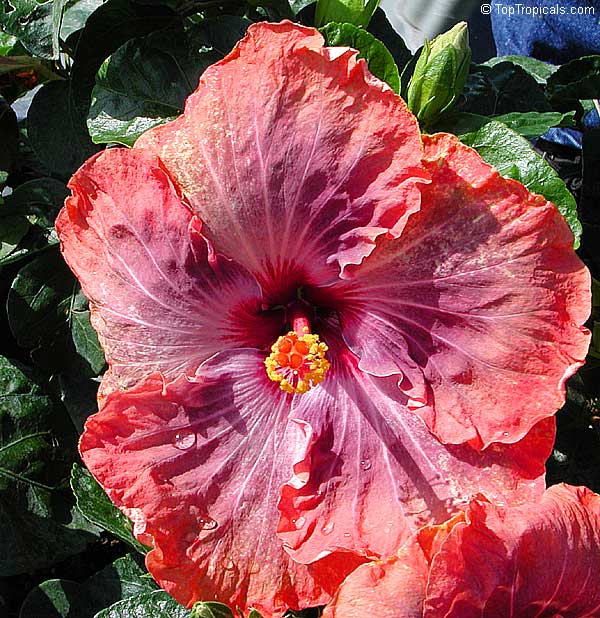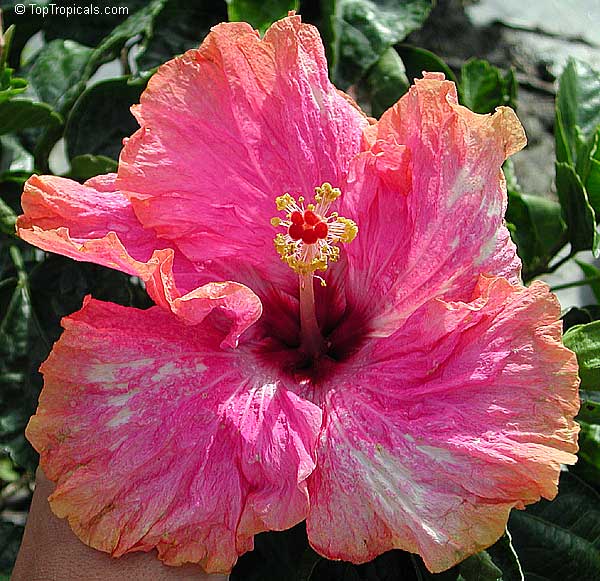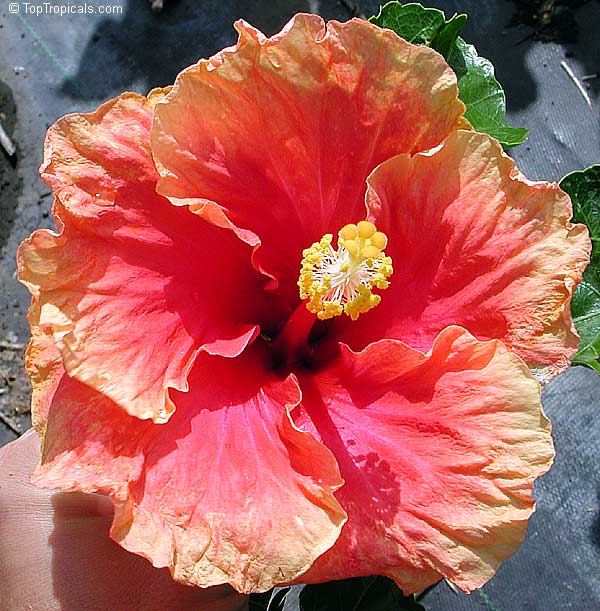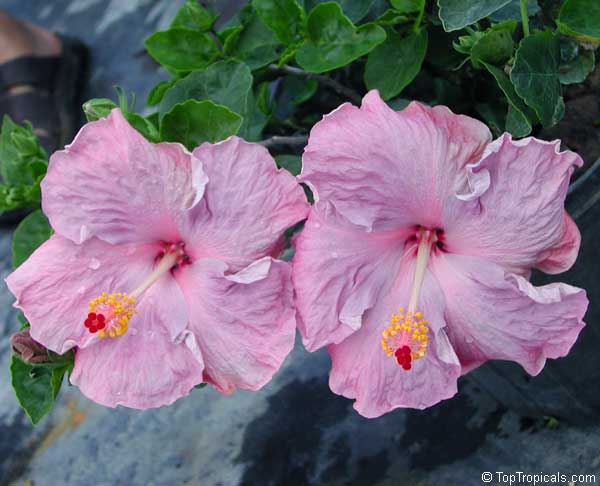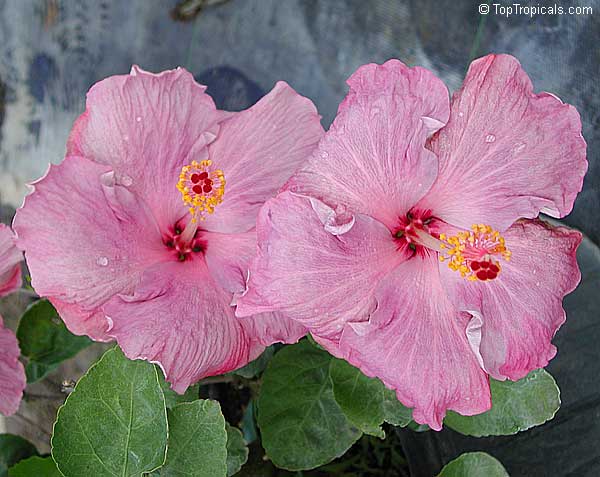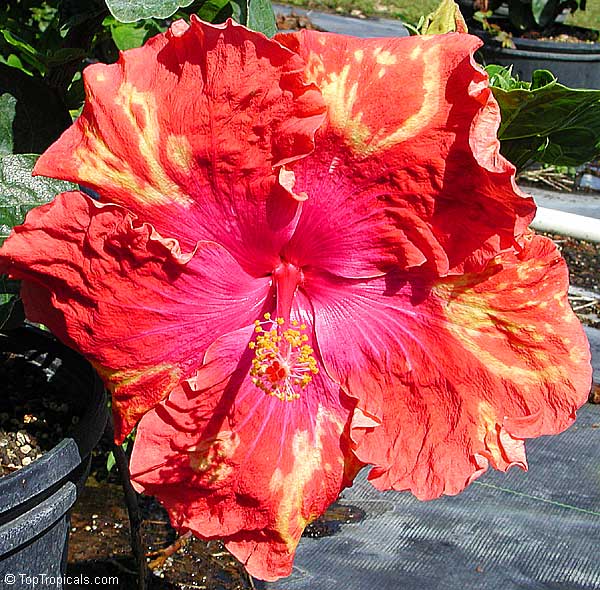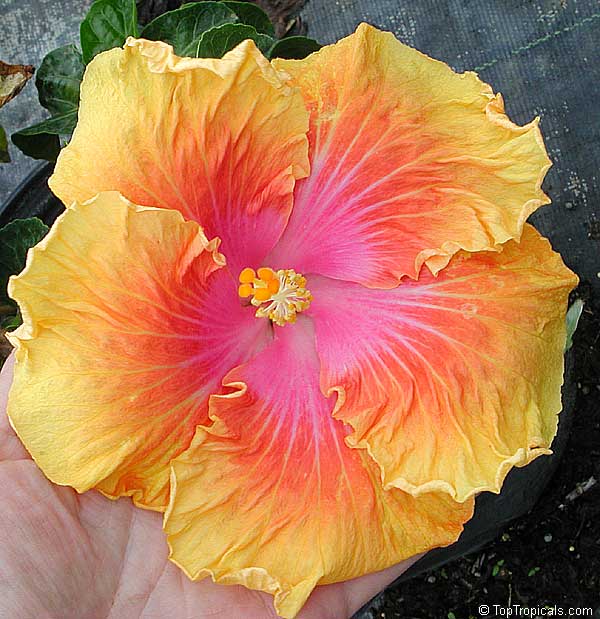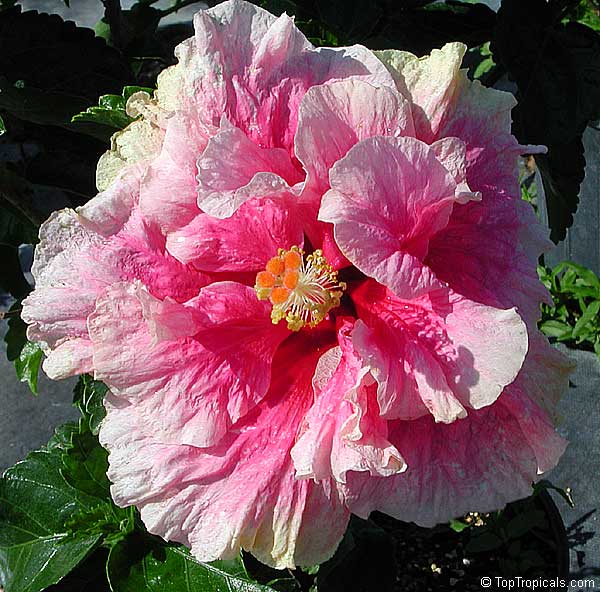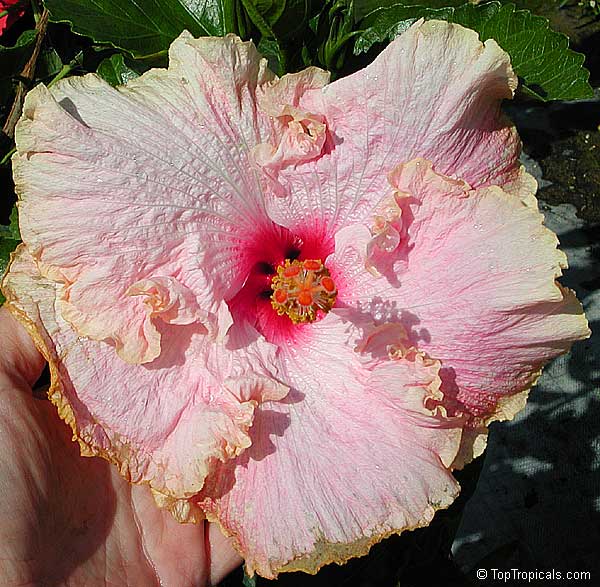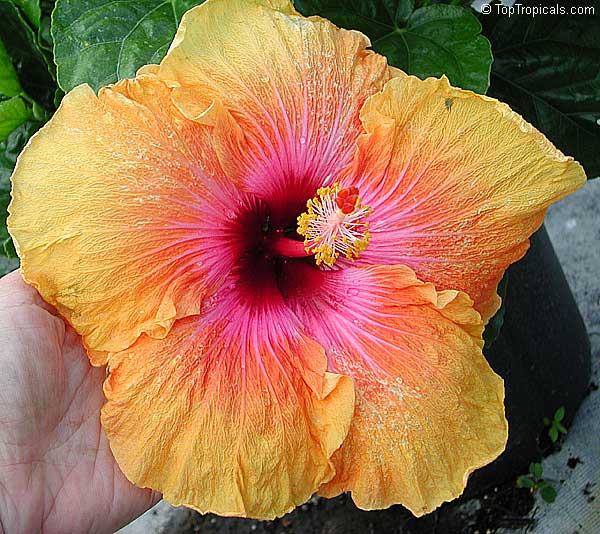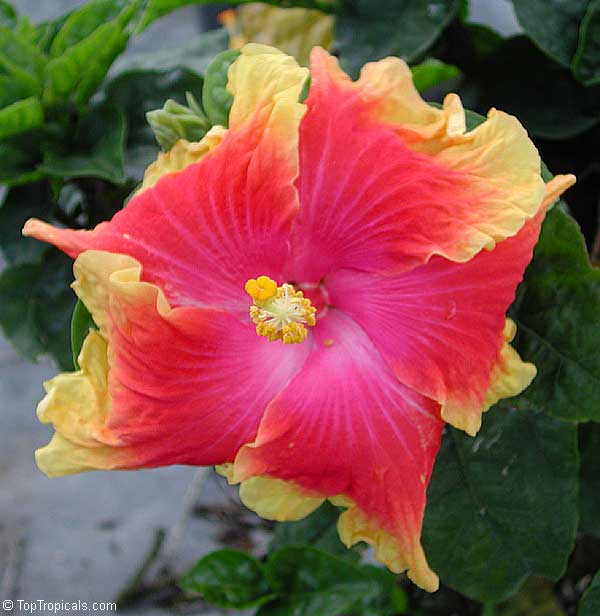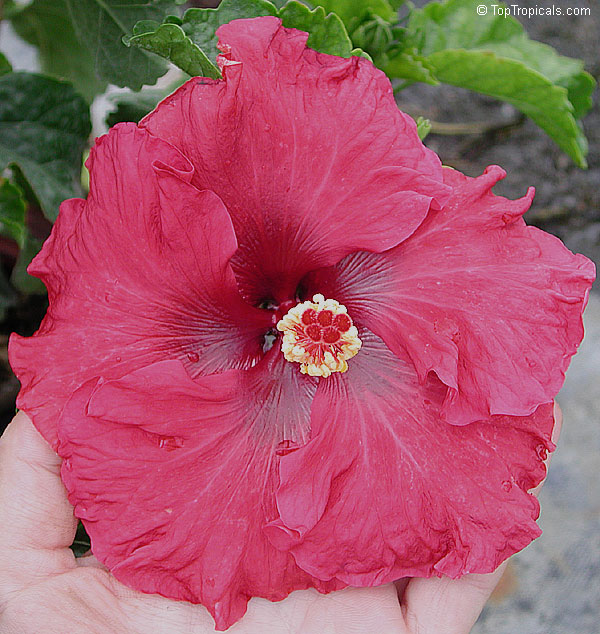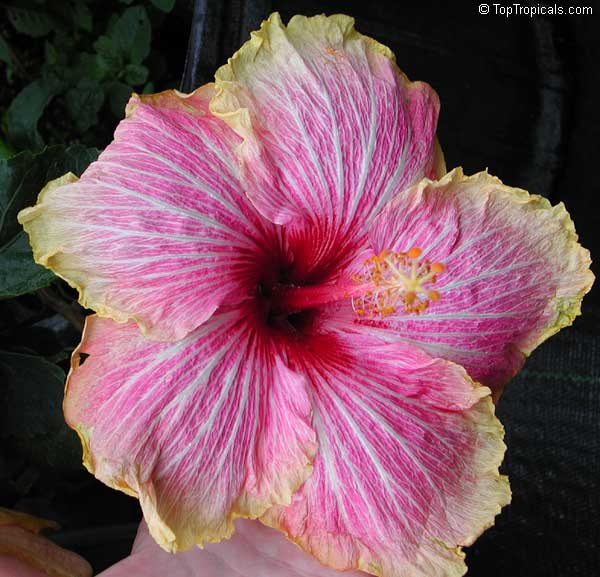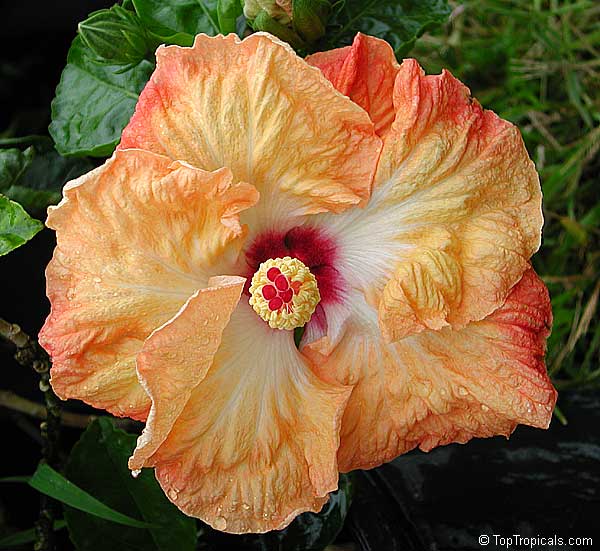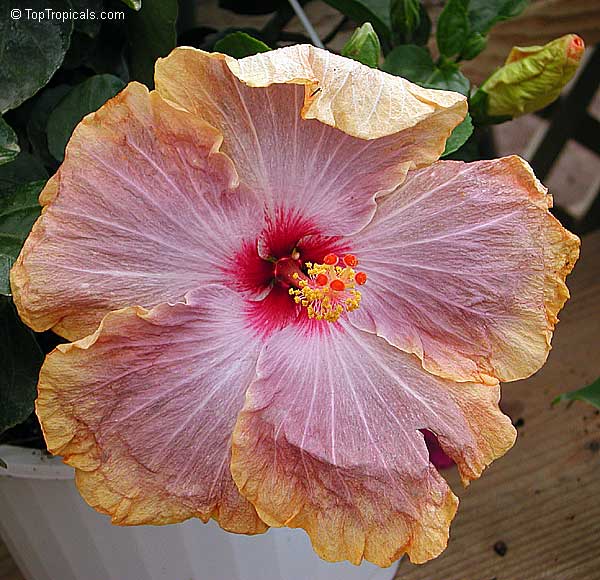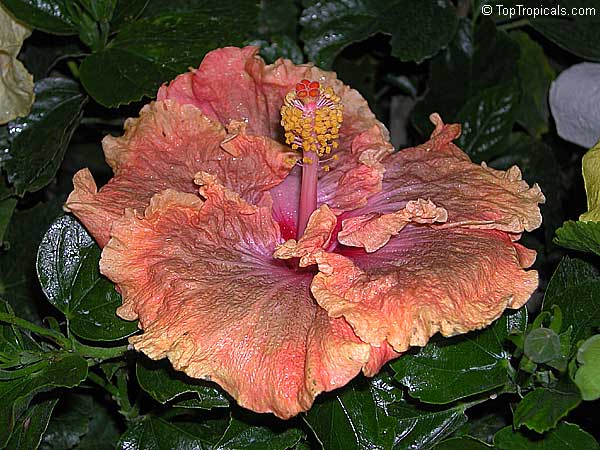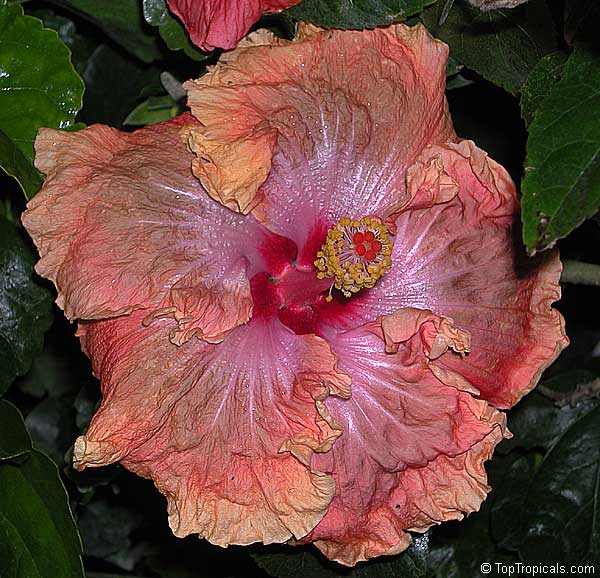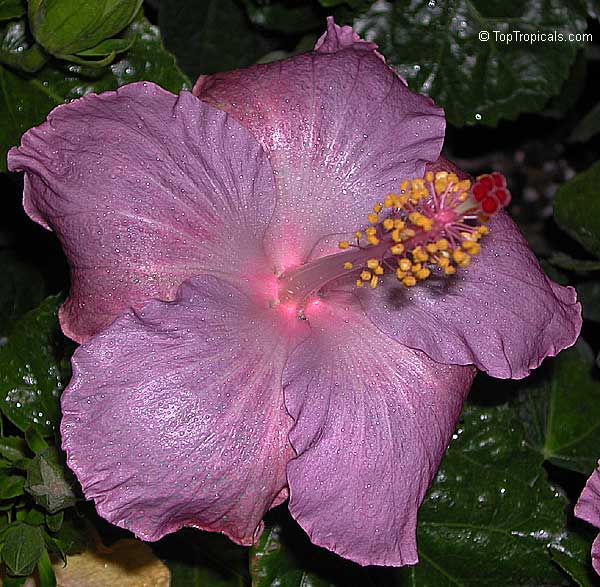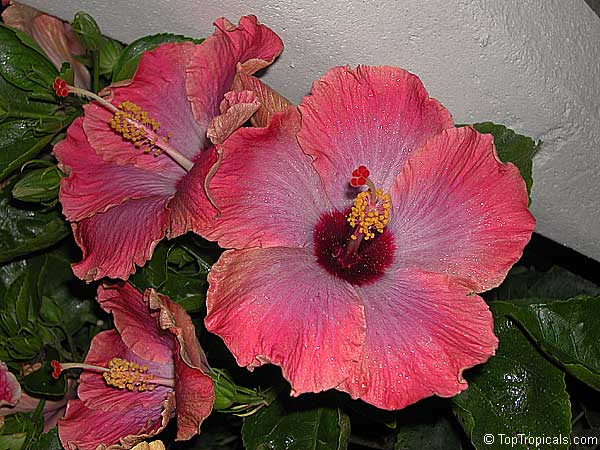Hibiscus rosa-sinensis
Tropical Hibiscus, Japanese rose, Chinese rose
Click on image to enlarge
Snow Queen


See our Special - Rare Hibiscus:
Hibiscus furcellatus -
Linden-leaf Rosemallow (Sleepy Hibiscus)
Hibiscus Care:
Hibiscus do not like wet feet, but neither should they be allowed to dry out -- especially in hot weather. Organic matter in the soil and mulch on top help to maintain a constant level of moisture in the summer. In pots or not, good drainage is very important!
They do like a lot of direct light, but under a blazing sun from dawn 'til dusk with temperatures in the 90s, 32+(C) and many of these hybrids will reduce their blooming. A little shade during the heat of the day and they will reward you with more and larger blooms.
Fertilize lightly and often -- hibiscus are heavy feeders. Use fertilizers that include the trace elements such as iron, copper, boron, etc. A dry fertilizer such as a 10-10-10 is all right, however most growers prefer low phosphate fertilizer such as a 7-2-7, feeling that it helps produce the most impressive quality and quantity of blooms. Those so-called "bloom specials" with the 10-40-10 type of formula are avoided by professional growers. Phosphorous can build up in the soil over time and cause a general decline in the health of tropical hibiscus plants. Over-use of high nitrogen fertilizers may encourage leaf growth rather than flower production. Water soluble fertilizers are good both for spraying leaves (foliar feeding) and for fertilizing potted plants. Experiment and see what works well for your local growing conditions.
Insects, such as aphids, thrips, scale, whiteflies, etc. should be
checked for frequently. Water plants thoroughly before using insecticides
to lessen shock. It's usually best to apply in the early morning or
in the evening when temperatures are below 80F degrees. When applying,
both the tops and undersides of the leaves should be sprayed. Of course,
follow the label directions. For most insect problems, Orthene, a systemic,
is widely used. Cygon, another systemic, is often used against scale
and other insects. Products containing imidacloprid are excellent for
controlling whiteflies. Many people report that Bounce fabric conditioner
strips also discourage whiteflies. Soaps and dishwashing detergents
(Soaps are preferable to detergents.) are also very useful as are certain
types of oils, such as Ultra Fine Oil, very good for whiteflies. Many
report good results with neem products. WD40 or Pam, sprayed on the
stem and branches and avoiding the leaves, are excellent for controlling
scale. NEVER use liquid Malathion on hibiscus.
The tropical hibiscus belongs to the Malvaceae or mallow family. Other relatives are the rose-of-sharon (shrubby althea), the hardy hibiscus grown in the north, okra, cotton, the Confederate Rose, hollyhock and quite a few others. Further information is available in "The Hibiscus Handbook" available thru the American Hibiscus Society. Some types hibiscus have been used to make dyes and others have been used as food.
Originating in Asia and the Pacific islands, Hibiscus rosa-sinensis is Hawaii's state flower and the national flower of Malaysia. Thousands of colors and combinations of colors (no true blue or black), some varieties have blossoms 2" in diameter and others, 10-12". Some with bushes that will only grow a foot in several years while others may grow to 15 feet if left undisturbed in the ground. Singles, doubles, some blooming almost every day, the variation in the tropical hibiscus family is astounding!
Real interest in Hawaii developed around the turn of the century. Some plants probably came from China and were crossed with native Hawaiian species. Interest spread to the U.S. mainland and Florida became a center for this interest -- the Reasoner family being early pioneers. The American Hibiscus Society was formed in 1950 with Norman Reasoner as its first president.
Another strong area of organized interest in hibiscus is Australia. It is thought that they were introduced there in the early 1800s, but real interest was sparked later when 30 plants were imported from India for use in the landscaping of Brisbane by its city council. The northern parts of New Zealand also became involved in hibiscus culture.
If in areas with frost, keep your favorite grafted hybrids in pots and bring inside. There are many gardeners who grow all their hibiscus in pots. These people may live in Texas or even Minnesota and Ontario and they find ways to successfully grow and enjoy the tropical hibiscus 12 months a year. (Please see the page at this site about growing in non-tropical climes.) Many of the non-grafted "garden varieties" will come back from the roots if a frost kills the upper plant, but these ARE tropical plants.
Florida sunset
Mrs. James Hendry
Huge 6" flower
Huge 6" flower
Black Dragon
Click on image to enlarge
Huge 6" flower
Huge 6" flower
Black Dragon
anaai 1 ?anoaiea
I?aiu ia?iay ?anoaaoea!
anaai 1 ?anoaiea
Oh-la-la
